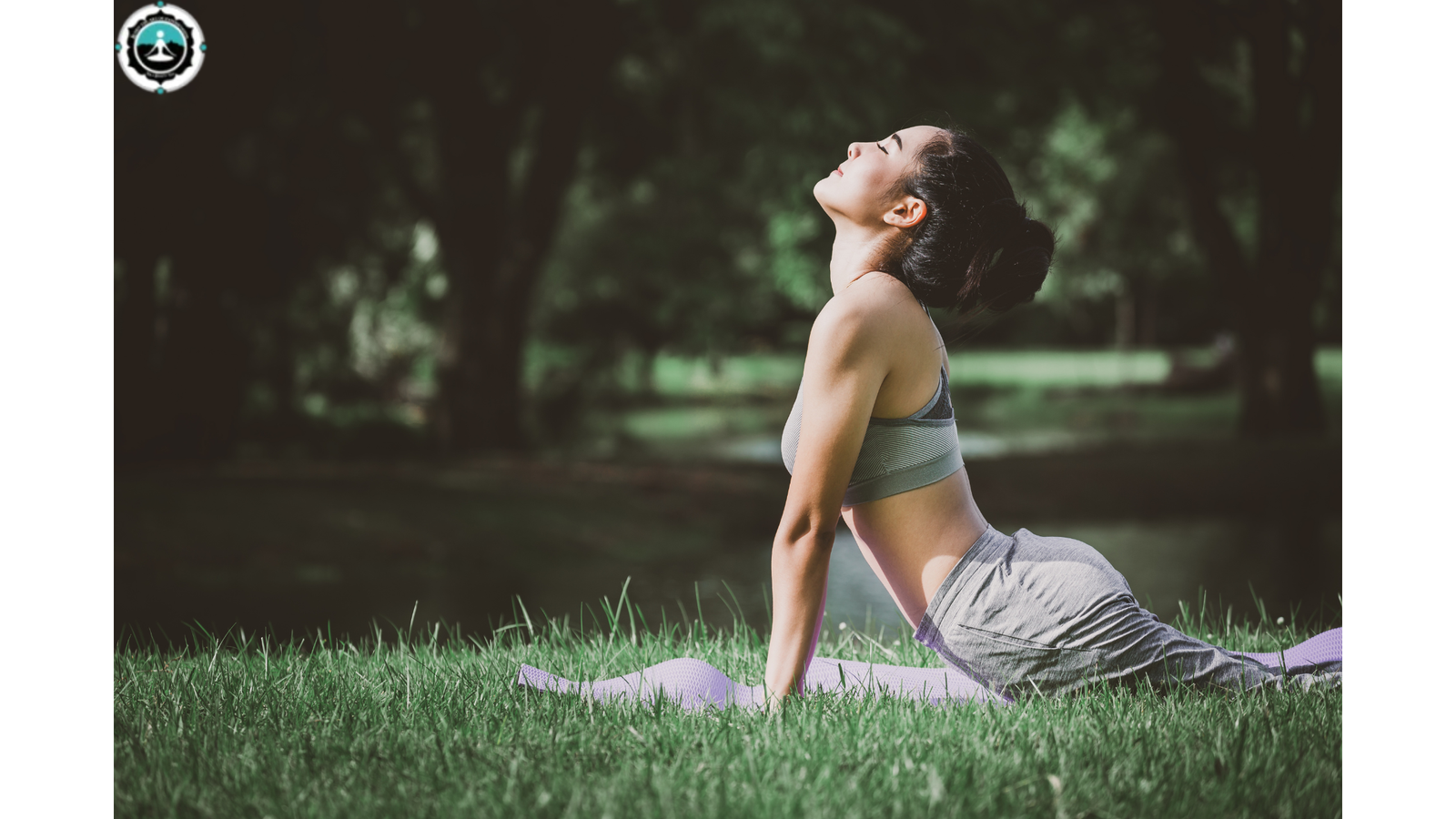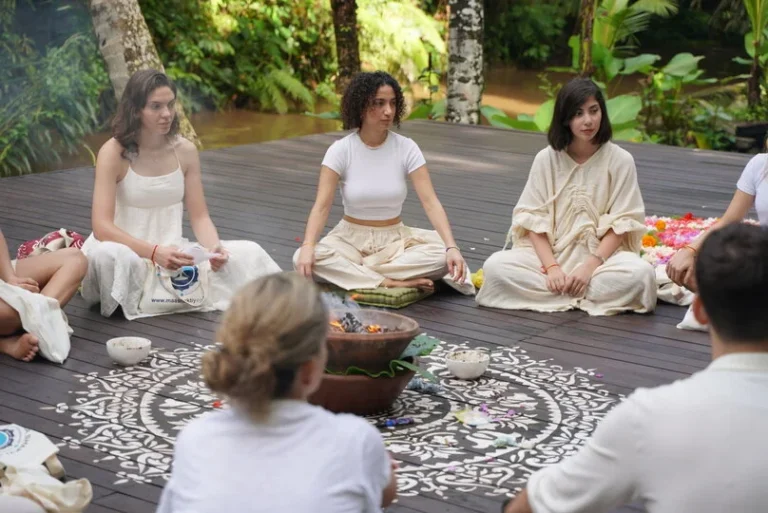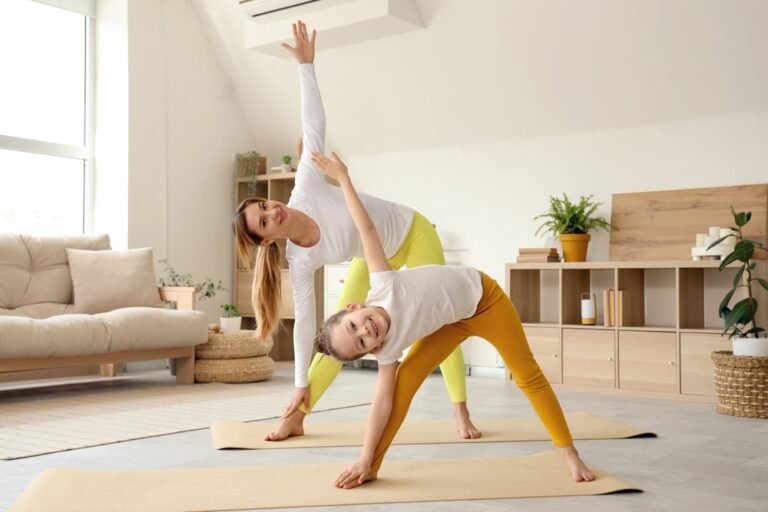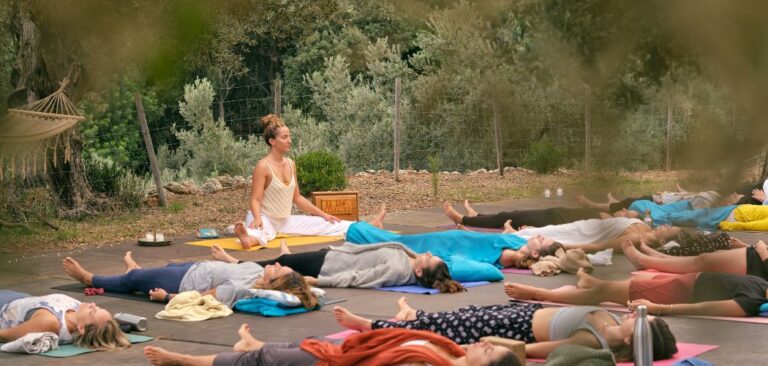The Science of Yoga Anatomy: What Every Yoga Teacher Trainee Must Know
Hello, everyone!
Let’s get honest for a minute. When you first think about yoga, “anatomy” isn’t the first thought that comes to your mind, right? Maybe the immediate thought is blissful stretching or the notion of finding a sense of inner peace or those crazy-looking poses you found on Instagram.
Well, here’s the fact – in order to teach yoga, to safely and effectively guide others, we need to know what is happening underneath the skin. Yoga is much more than “stretching”. Think about it this way: you wouldn’t build a house without knowing the blueprints, right?
The human body is the most incredibly complicated structure, and as yoga teachers, we are guiding people within that structure. This is a big reason why you need to dive into anatomy, especially if you are considering a 200-hour yoga teacher training course or even a 300-hour advanced yoga training course.
We have meetings where trainees come in, believing yoga is about flexibility, only to be overwhelmed by how biomechanics and physiology are at the core of yoga.
When you are looking at a Yoga Alliance Certified Course, you are looking beyond the poses, and you are going to learn about how to teach them safely, how to adapt them, and how to actually know the bodies in front of you. And if you are looking for the best yoga teacher training programme in Bali, this is what you will want to look for.
Personally, at our school, we believe that a deep understanding of anatomy changes everything about your practice as a teacher and makes the shift from simply showing poses to guiding people in a meaningful way. Whether you are on the path to becoming a certified yoga teacher or are just looking for a greater understanding, this is the foundation.
Let’s Begin With The Body
Our Skeleton: The Framework of Movement
Okay, let’s get to the skeleton: it’s not just a collection of bones that hold you up. It’s the framework for every movement you make in yoga. It’s like the scaffolding of a building. Even as we discuss poses like Tadasana or even seated, it’s about how those bones align.
Here’s the cool thing: everyone’s skeleton is slightly different. For example, your hip sockets may be shaped slightly differently than mine, or your spine may curve in a different and unique way. This explains why being baby-aligned is not universal.
Understanding these skeletal variations is vital. It will play a huge role in what you learn in a residential yoga teacher training or on an intensive yoga teacher training retreat.
We’ll be putting our hands on our bodies and feeling those important bony landmarks and learning how to observe those differences in our students. This is not a concept in a textbook, but material you will use every week, if not daily. It’s a huge part of why people look for an international yoga certification course or a yoga instructor course in Bali.
The Muscular System: Movers and Stabilisers
Up next, the muscles! They’re the engine that moves your bones, right? However, it is not just about biceps and quads. In yoga, we are looking at how your muscles work together – the movers, the stabilisers, the ones that assist with balance, and the ones that assist with achieving depth in a pose.
Consider Warrior II. You’re not just standing there; you’re activating a whole symphony of muscles. And knowing how they work gives you the ability to explain the pose to your students in a way that makes sense.
It helps you avoid injuries, and it helps you navigate them to the next level. This is a foundational piece of any yoga teacher training in Bali, and especially any training that hopes to give you tools to understand the body.
Focused on functional movement patterns, not isolated muscles. This is how you really connect with the body. This is how you help your students connect. This is how you differentiate a programme from being just a programme.
Lastly, the nervous system.
This is where the magic truly happens and where the mind and body truly connect. It’s not just about flexibility or strength; it’s about awareness. Proprioception and kinetics, which means how your body senses where it is in space.
Consider balancing postures. In balancing, the first thing to think of is not muscle strength but rather how the nervous system collaborates with your muscles to keep you balanced.
And breathwork? Breathwork is information to quiet the nervous system. In turn, this helps you deepen your relaxation and focus. Understanding how the nervous system operates and impacts your flexibility and stability is an incredible perspective change for your teaching.
This is the reason we see breathwork and mindfulness as powerful tools in your classes, and in general, this is the factor that transforms yoga from just a workout into an experience.
This experience is essential for your students in order to have an incredible experience in your course in Bali.
Deeper Understanding (For Refined Teaching)
Biomechanics of Asana: Understanding Forces and Levers
Alright, we’ve nailed down the basics. Let’s step it up a notch – but don’t sweat it; it’s going to be clear. Biomechanics. Ouch! Biomechanics might sound intimidating, but if you break it down, it really just involves understanding how forces and levers work in your body when you are in a yoga pose.
It’s like jigsaw puzzle pieces; you take the pose apart and find the forces acting on the skeleton and the soft structures, like muscles, to assess what is going on with your students. You might be thinking, What’s the point? Well, it’s a step to teach safely and effectively.
Once you understand the biomechanics frame of reference, you’ll start to conceptualise why some students struggle with a pose, and it’s at that point you can actually provide cues to help! For instance, take the complicated pose of a handstand. If you thread the pose through its mechanics, you can then scaffold your students, using one or some biomechanical aspects until they feel comfortable.
The students risks go down while their understanding of biomechanical force goes up! If you are enrolled in a solid 200-hour yoga teacher training course, you will be taught to look at poses in this way. It’s what separates a good teacher from a great one!
And if you are going to invest in a 300-hour advanced yoga training, you will want to know why this is particularly valuable knowledge. After all, if you want to know more about knowledge yoga teacher training courses, you are probably going to choose the Best Yoga Teacher Training in Bali!
This is a topic that will come up in any international yoga certification course.
Fascia: The Connective Web
Let’s discuss fascia. It is an extraordinary tissue and matrix of connective tissue that surrounds everything in your body – muscles, organs, bones. In fact, it’s the internal scaffolding of the body, and it is a huge factor in your ability to move or be flexible.
That feeling of tightness or stiffness? This is not only due to muscle; this is often due to fascia. Fascia can be restricted, and this can impact your yoga practice in ways you may not even notice. This is why understanding fascia is important. We will explore how to use fascial release techniques in your classes. This might look like foam rollers and therapy balls.
These tools can help your students release tension and improve their mobility. This is a life-changing method, especially if you are working with students struggling with chronic tension or pain.
This is the type of hands-on experience you will have in a residential yoga teacher training programme or intensive yoga teacher training retreat. This practice is absolutely necessary for you to gain the skills to ultimately help others to become a certified yoga teacher.
Anatomy of Breath: The Respiratory System and Pranayama
Let’s lastly discuss breath. Breath is at the heart of yoga, correct? But in all honesty, how often do we think about the anatomy behind breath?
Understanding the respiratory system: the lungs, the diaphragm, and other muscles and soft tissues involved in breath can really change your pranayama practice and your teaching of pranayama.
Furthermore, when you understand how different types of breath work can affect body and mind, you will be able to get your students into a place of experience and fullness from their pranayama practice.
Some examples of these experiences can be calming the nervous system or increasing a person’s level of energisation. We will talk about the anatomical considerations for advanced pranayama practices.
Not every breath practice is suitable for every person, and this involves being able to evolve the practices based on knowledge of the body and the students’ breath experience. This is a major component of any good yoga teacher training in Bali and of any programme seeking to give you tools to understand the body.
Specialised Applications (For Advanced Understanding)
Anatomy for Specific Populations: Modifications and Adaptations
Alright, we’re moving into the really good stuff now—specialised applications. Because the truth is, not every individual that steps into your class will be a young, flexible athlete. You will also have pregnant women, elderly, injured participants, and students with various variations of unique bodies. Knowing the tools to adapt your teaching to accommodate these variations is absolutely necessary.
Think: pregnancy can significantly affect the body. People carrying injuries to their knees, they might require different modifications than people with injuries to their backs. Knowing the anatomy of a pregnancy or how to apply nuance to someone with a knee injury is not just ‘one’ layer of consideration to decreasing risk or being mindful of the injury; it is about making yoga accessible.
We will be exploring practical strategies for modifications and also variations, so you will be equipped to see the body in front of you and make educated decisions about both safety and effectiveness. This is an important skill for anyone taking the leap to become a certified yoga teacher, and it will most likely be one of the focus areas in a detailed Yoga Alliance Certified Course.
Courses that take this level of consideration into consideration are sometimes referred to as “The Best” Yoga Teacher Training in Bali and are necessary when finding an International Yoga Certification Course.
Integrating Anatomy into Your Teaching: Practical Tips and Techniques
So, you’ve got a better idea of exactly what to do with all of this anatomy knowledge? It’s a million-dollar question, right?
Knowing the anatomy is one thing; translating it into something to communicate with your class is another ball of wax. In this module, we’ll explore some practical tips and techniques for cueing with anatomical precision.
You can think about your use of imagery, metaphors and even simple hands-on adjustments to help the students understand what is happening for them in their bodies. We’ll talk about ways to make anatomy come alive in your classes in a way that isn’t a dry subject but instead a living, breathing experience.
This is not an opportunity for you to just throw around abbreviations and anatomical titles and the proper use of a neutral spine. It’s about, as a teacher, connecting with your students and helping your students understand their own bodies in a deeper way.
This will be a skill to refine in a residential yoga teacher training programme or intensive yoga teacher training retreat. This is a skill that will distinguish you among yoga teachers.
Resources and Further Learning: Continuing Your Anatomical Education
The thing about anatomy is that it is a lifelong process. There is always more to learn, more to find out. So, think of this part as a resource map for your ongoing learning. We will share our favourite anatomy books, websites, and courses specifically related to yoga anatomy, as well as resources or teachers you might find here at the school.
Efforts towards continuous learning are very much supported in order to give you the tools to keep moving forward, even when your training is complete. Whether you are in a 200-Hour Yoga Teacher Training Course or a 300-Hour Advanced Yoga Training, you should always be looking to grow and learn. This is something any good yoga teacher training in Bali will also encourage.
Conclusion: Empowering Your Teaching with Anatomical Knowledge
Overall, there it is – a comprehensive exploration of yoga anatomy, including our basic material and then some. It’s a lot, I know, but I’m telling you it’s worth it.
Knowing anatomy will change your teaching – you will feel confident that you can guide your students with safety and efficacy, and you’ll feel like you are providing a beautiful, transformational yoga experience.
We hope you’re inspired to begin your own anatomical exploration. If you’re interested in a programme that puts this type of learning first, we would love for you to join us!
Check out our Yoga Teacher Training in Bali and see how we can help take your teaching to the next level.
What are your greatest questions about yoga anatomy? Comment below!







